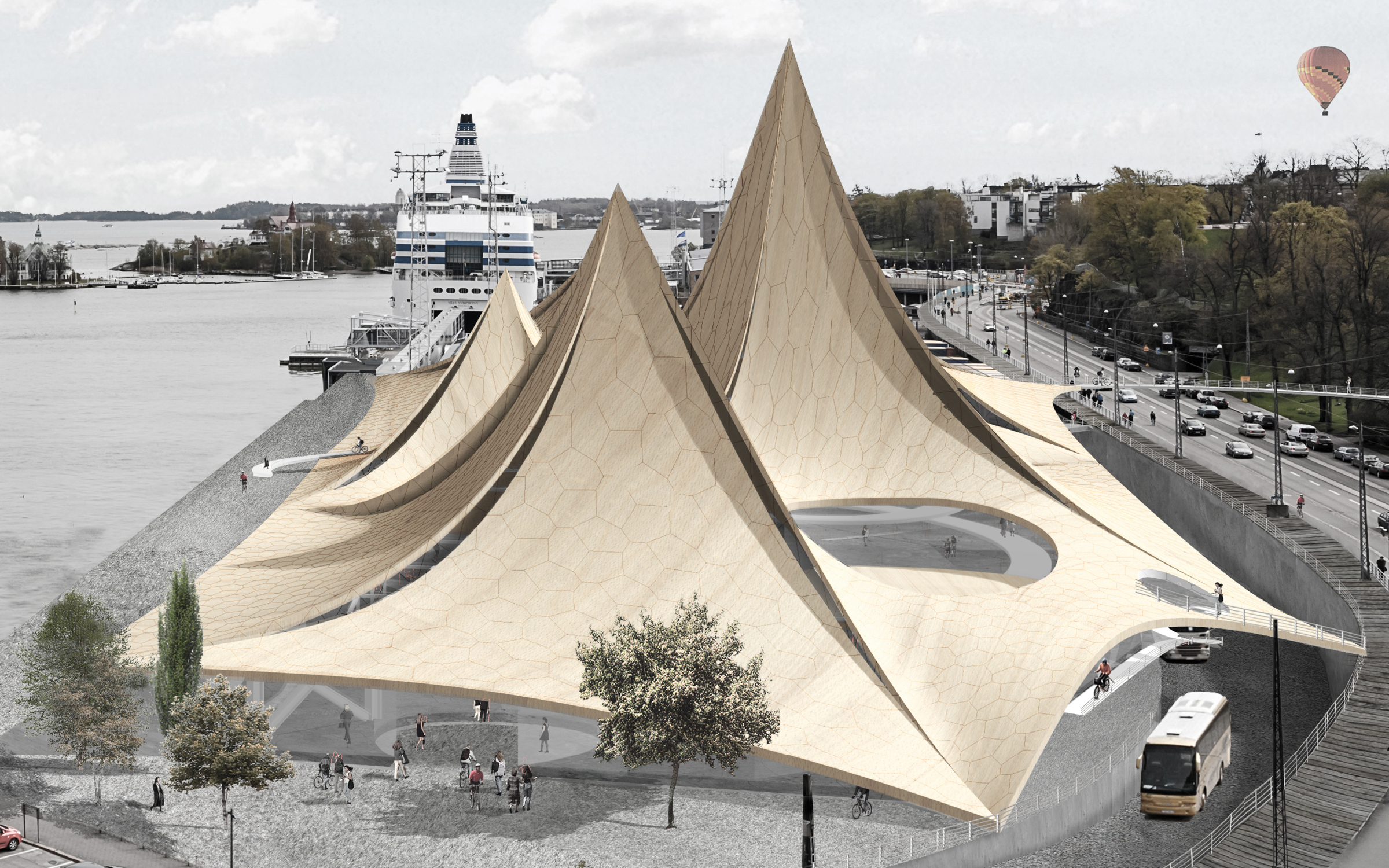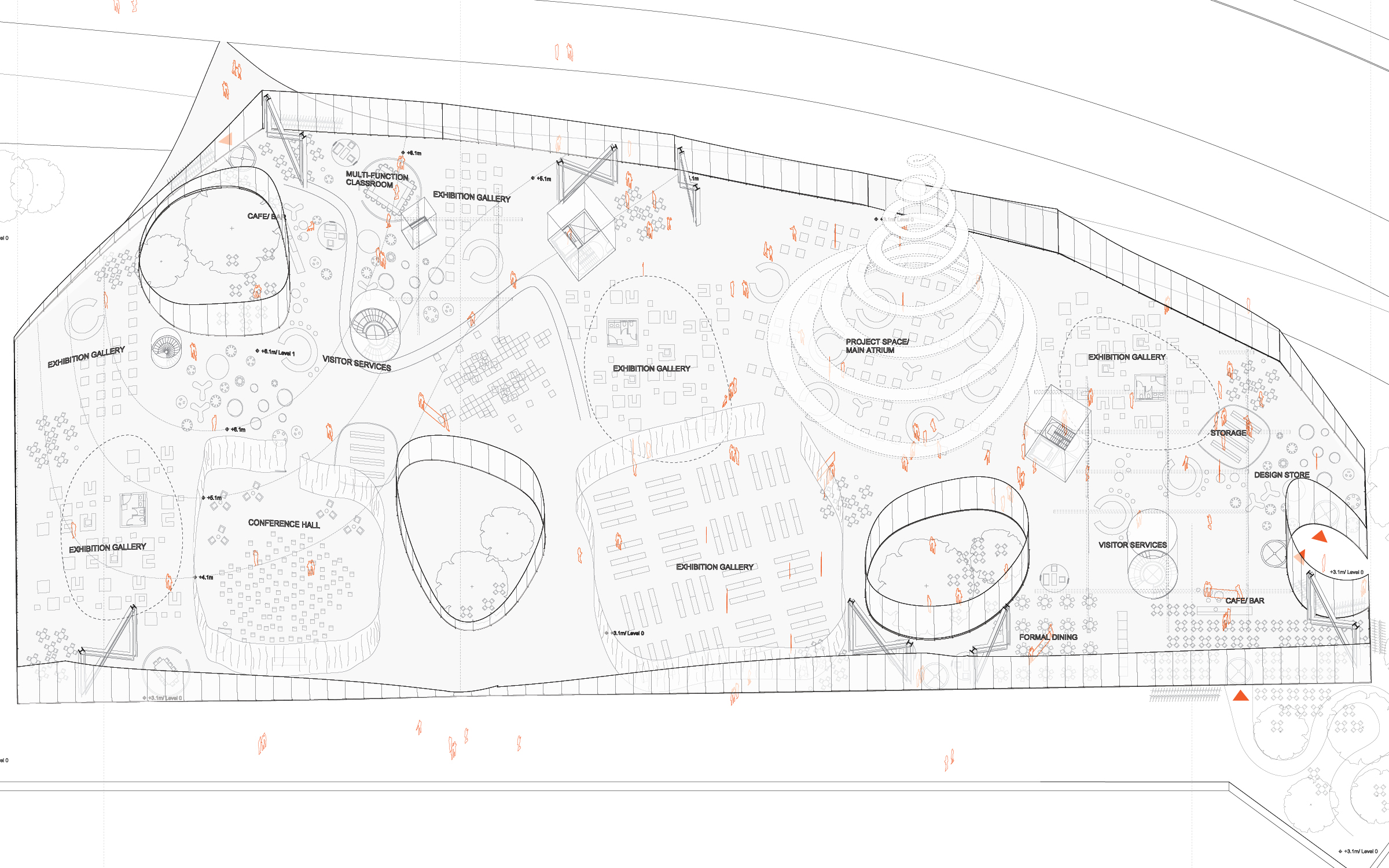GUGGENHEIM HELSINKI
CULTURAL,CIVIC
Client Guggenheim Foundation
Location Helsinki, Finland
Program Contemporary art museum, performance hall, black box theater, offices, cafe, store, restaurant, archive
Area 12,100 m² / 130,243 ft²
Status Competition
Location Helsinki, Finland
Program Contemporary art museum, performance hall, black box theater, offices, cafe, store, restaurant, archive
Area 12,100 m² / 130,243 ft²
Status Competition
This proposal achieves spatial complexity through a single gesture: a continuous plinth spanned by a pitched-and-cut roof canopy. The lightweight timber canopy is a rigid catenary, form-finding structure in compression. Hexagonal structural panels warp and tessellate into a tensile surface, and provide the long-span enclosure below. Here, all public programs embed into a park-like field of continuous circulation: on one floor, in one room.

CURATORS ARE GIVEN TREMENDOUS FLEXIBILITY TO DIALTE OR CONTRACT THE VIEWING EXPERIENCE FOR VISITORS.
Below the canopy’s peaks and troughs, which rise and fall in response to the site and program, the plinth accommodates a diverse range of exhibition spaces and shifting atmospheres. Whereas the troughs shelter intimate alcoves and courtyards, the five peaks each reveal a cavernous atrium. Rather than permanent walls, the canopy itself performs visual and acoustic partition. Since no gallery is isolated socially, curators are given tremendous flexibility to dilate or contract the viewing experience for visitors: multiple simultaneous exhibitions may connect or diverge; revealing parallels and comparisons across historical and disciplinary lines; allowing the emergence of innovative and unexpected narratives.


SUSTAINABLE ENERGY AND MATERIALS
Ecologically-speaking, the energy and materials required to construct—as well as to illuminate and climate-control—this vast, hanger-like interior is seemingly unjustifiable. The canopy and plinth, however, both advance sustainable construction methods and climate-responsive strategies. Concealing the column-free trusses, the canopy is cut and pleated along its ridges to maximize indirect natural light, passive solar gain, and when necessary, natural ventilation. Tessellating the structural panels, furthermore, produces a sufficiently strong and rigid shell, and greatly reduces the project’s reliance on structural metals. On the ground, the plinth is conceived as a gridded “air plenum,” which allows galleries to separately plug-in for heating and cooling, and therefore, minimizes the building’s required electricity load.

Team
Andrew Heid, Wendi Cui, George Distefano, Sbrissa Eleonora, Nicole Mattos Toja, Marta Rodrigues, Alberto Andrés Silva Olivo, Sabrina Wang, Xiaoyue Yin, Erin Yook
Andrew Heid, Wendi Cui, George Distefano, Sbrissa Eleonora, Nicole Mattos Toja, Marta Rodrigues, Alberto Andrés Silva Olivo, Sabrina Wang, Xiaoyue Yin, Erin Yook

